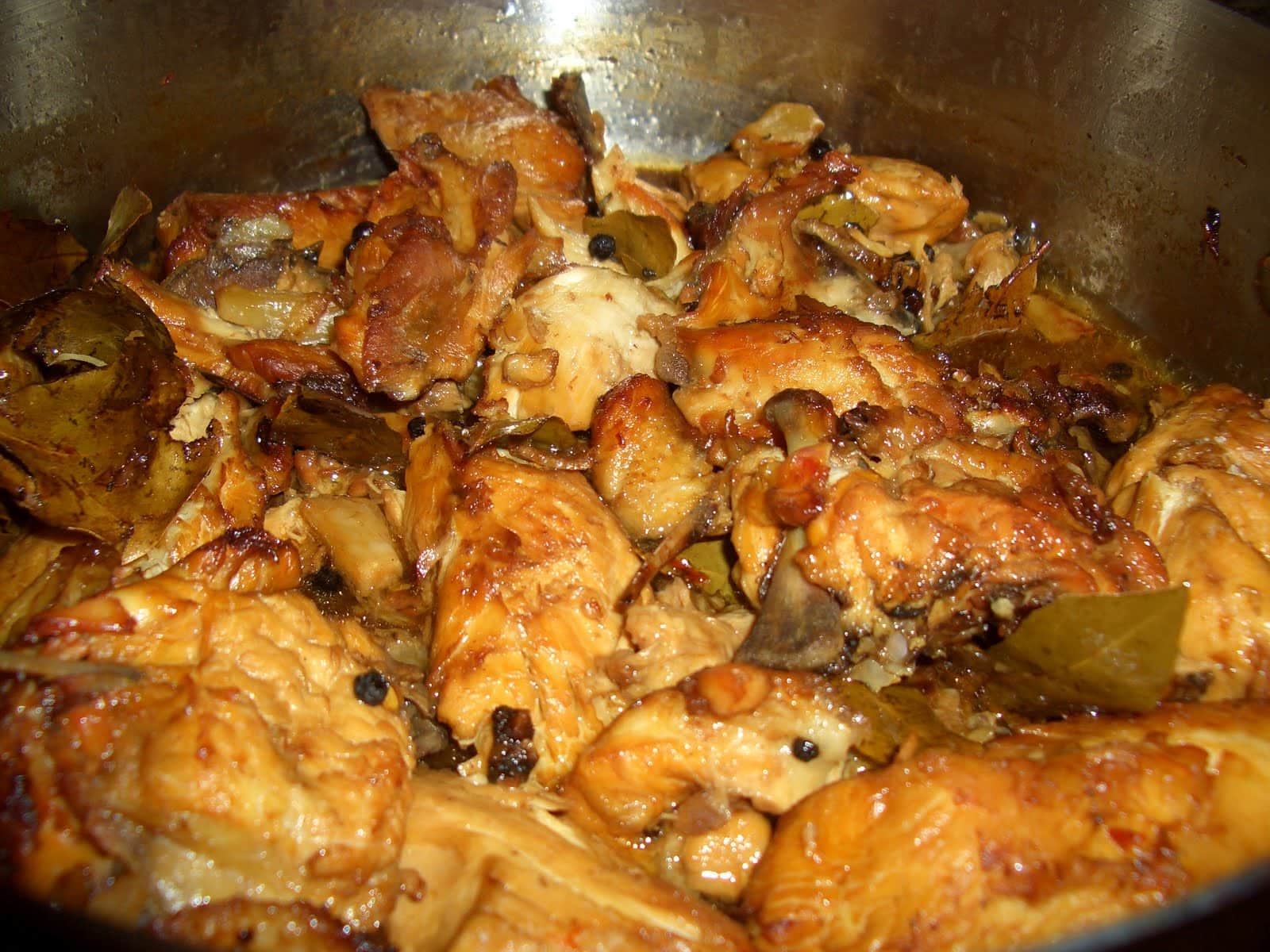
The Different Adobos Around the World & The History of the Filipino Adobo.
Adobo is a food word familiar to Filipino and much of the Spanish-speaking world. Learn the cultural differences of adobo as well as the Filipino adobo history:
The Different Adobos Around the World
Spanish adobo comes from the word “adobar” meaning “to marinate.” Adobo of Spain is a seasoning rub or marinade to preserve and flavor meal. The ingredients include paprika, oregano, salt, garlic, and vinegar.
Fun fact: Spanish adobo influenced the Portuguese carne de vinha d’alhos (meat marinated with garlic and wine) which in turn influenced the Indian vindaloo curry.
Mexican adobo is a mixture of crushed chilies like chipotle and ancho peppers as well as spices like cinnamon, oregano, and cloves mixed with vinegar, tomatoes, garlic, and oil. The result is a thick, red, spicy sauce that can be used as a sauce or as a marinade before grilling.
Caribbean adobo is a seasoned salt for meats and seafood used before grilling, sautéing or frying. The blend includes garlic, onion, oregano, and citrus that either comes as a wet rub, adobo mojado, or as a dry rub, adobo seco.
Peruvian adobo marinates pork in local red peppers, oregano, garlic, onions, and vinegar and then the pork is stewed in a clay pot until tender. It is served with either white rice or bread.
Uruguayan adobo is a spice mix using the same spices as the Spanish adobo, but rather than a marinade it is consumed as a condiment or sauce.
Filipino Adobo History
Filipino adobo has a history that dates back well before the presence of Spaniards in the country.
The history of marinating meat in vinegar and salt was first introduced to the country by the Malay settlers as a means of food preservation. Locally, coconut vinegar and palm vinegar were used as well as clay pots to cook and stew.
Next came the Chinese traders who brought their soy sauce. The marinade and stewing of the meat with vinegar and garlic now added soy sauce as the salting agent. Yet, at this time, there was no official name given to this dish.
Then, the Spaniards arrived in the 16th century, saw the method of cooking which they knew of as “adobar” or “to marinate”, and named the dish “adobo”.
Essentially, adobo (which in the Philippines refers to the whole dish rather than the seasoning or the process of marinating) consists of chicken, pork, seafood, or vegetables that are marinated in vinegar, garlic, bay leaf, peppercorns, and a splash of soy sauce. You can find regional variations as well as countless household variations on the dish.
Today, Filipino adobo continues to be one of the country’s most beloved dishes as well as one of its national dishes that is slowly becoming internationally known and appreciated.
Sign up for my newsletter on the sidebar for blog updates and my travel insider tips! And, check out my vlogs on YouTube!


